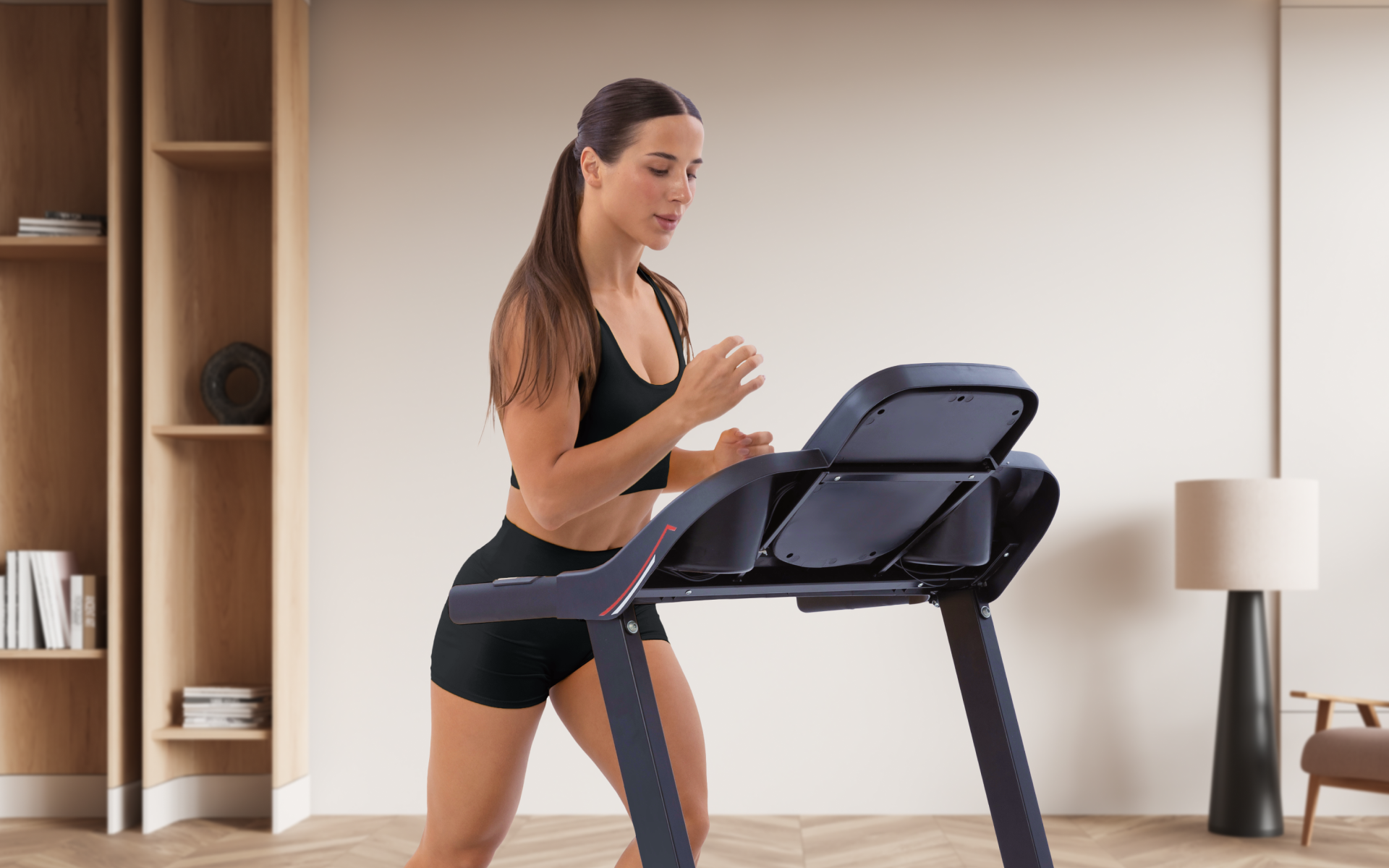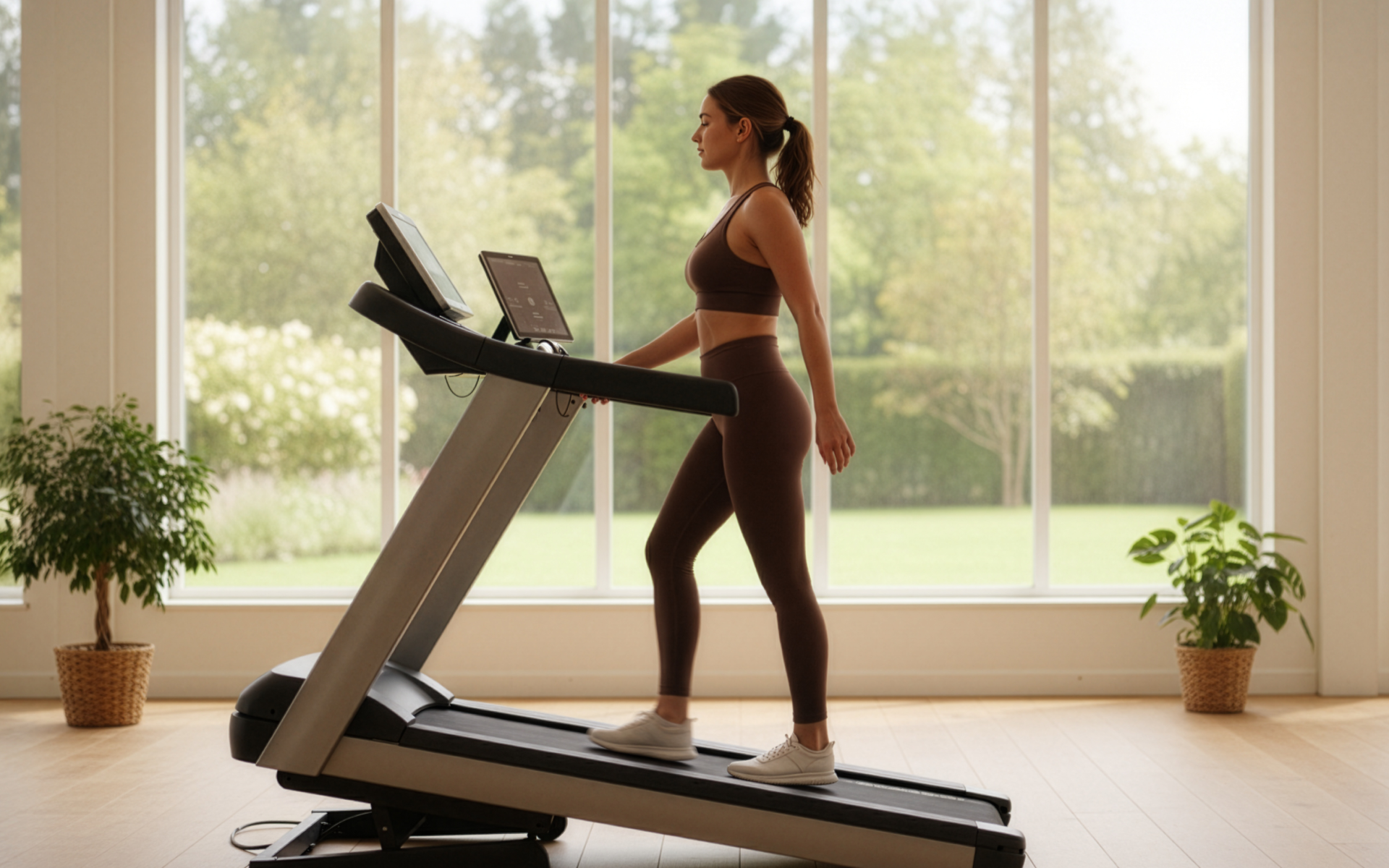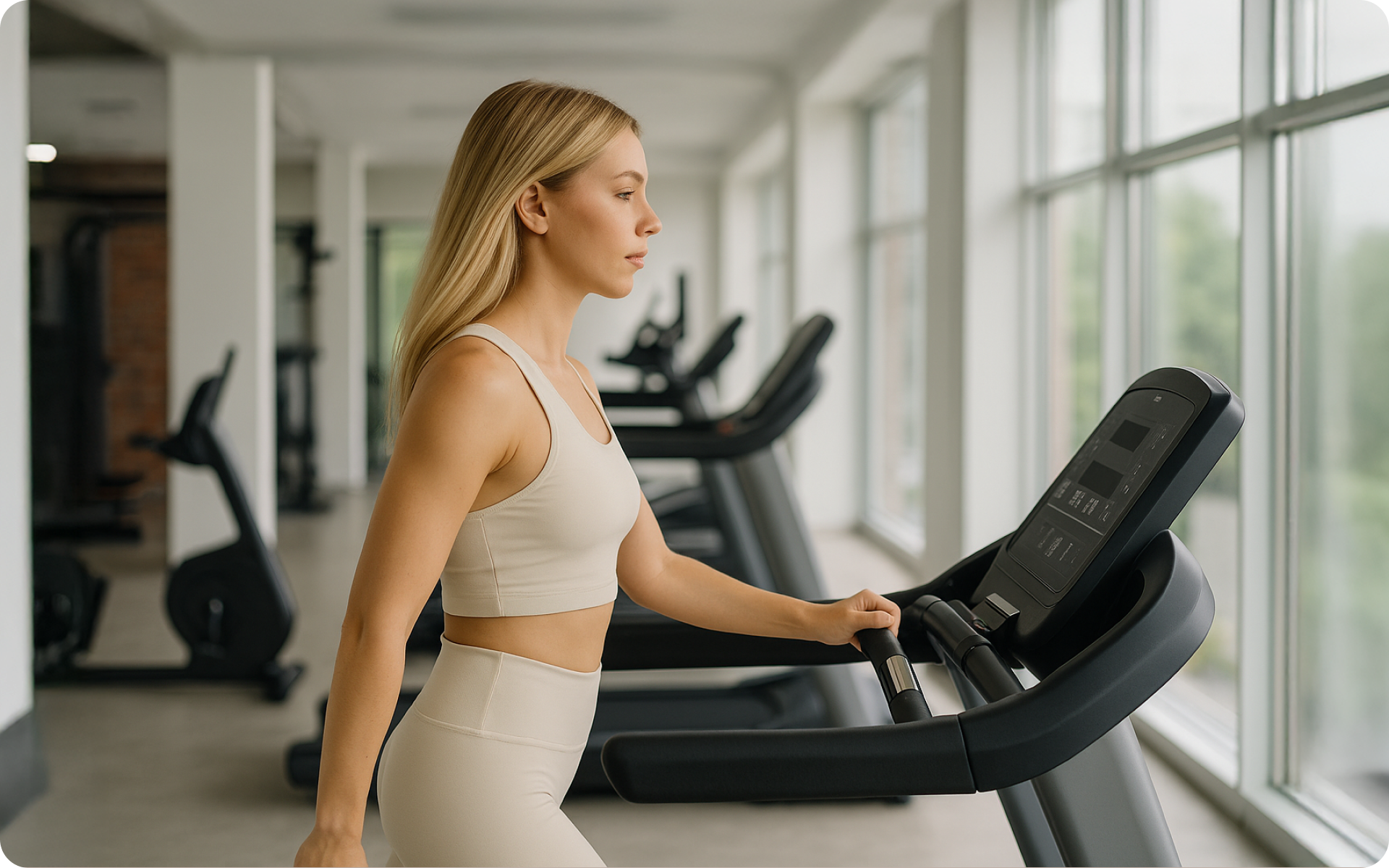Walking and running are some of the easiest and most accessible exercises that you can do. A treadmill, which according to research is the most widely used exercise equipment for endurance testing in the United States and the UK (1), can come in handy for anyone who doesn’t enjoy doing either of these activities outside or who doesn’t have the opportunity to do so.
With the increased popularity of modified treadmills such as the desk treadmill, a growing number of people find themselves using this equipment daily. But is using a treadmill every day a good thing?
Let’s explore the benefits, if any, and risks you may encounter if you choose to do this.
What Is a Safe Way to Use a Treadmill Daily?
This isn’t something that many people will be excited to hear, but there’s no safe way to use the treadmill every day. It doesn’t matter if you’re using it for daily walking, jogging, or running – your body needs time to rest and recover after exercise. No doubt using a treadmill regularly can lead to incredible benefits, but remember to prioritize rest.
- According to a study published in 2021, researchers found that using treadmill desks allowed study subjects to increase energy expenditure and metabolic rate and reduce sitting time while doing work-related tasks – something that could help counteract the negative health effects of prolonged sitting in the working environment (2).
- In another study published in 2023, desk treadmill users claimed to have experienced benefits such as a more active lifestyle, better knee, hip, and back pain management, increased energy levels, weight loss, and mental health benefits such as better focus, improved mood and creativity, and better stress management (3).
However, despite all these benefits, overworking your muscles by using this machinery every day can lead to overtraining syndrome, a condition that occurs when a person trains/exercises excessively without adequate rest and recovery.
Read more: Treadmill Running Workouts to Build Speed, Stamina, and Strength
Can I Use a Treadmill Every Day?
If you’re able to prioritize recovery and not go all out every time you step on a treadmill then yes, you’ll likely be able to use it every day. The overall intensity of your treadmill workout will matter more than anything.
BetterMe: Health Coaching app helps you achieve your body goals with ease and efficiency by helping to choose proper meal plans and effective workouts. Start using our app and you will see good results in a short time.
What Happens If You Use a Treadmill Every Day?
As mentioned above, going on the treadmill daily can overwork your muscles, which then leads to overtraining syndrome. According to research, symptoms of overtraining can include (4):
- Parasympathetic Signs
These side effects of treadmill walking, running, or jogging every day without rest include unexplained fatigue, depression, lack of motivation in training/exercising, and bradycardia, aka a slower-than-normal heart rate of less than 60 beats a minute.
- Sympathetic Symptoms
These include sleep disturbances such as insomnia, mood swings that may manifest as increased agitation and irritability, restlessness, hypertension, and tachycardia, which refers to a rapid heart rate of more than 100 beats per minute.
- Other
Other symptoms of overtraining you may experience if using the treadmill every day for a month (or any other prolonged period) without rest include anorexia, concentration issues, and muscle aches (or heavy/stiff muscles).
It should be noted that parasympathetic symptoms are more likely to occur when you do aerobic sports such as running, walking, and swimming, while sympathetic symptoms are more likely to manifest in those who participate in anaerobic sports (4).
Other studies on the subject of overtraining have shown that it can also lead to decreased muscle function (weaker muscles), loss of appetite, decreased self-confidence, reduced immunity, which then leads to frequent upper respiratory tract infections, and reduced cognitive function and performance (5, 6, 7).
With all the following evidence showing how bad exercising without rest is, we can see that walking on a treadmill every day is more likely to cause harm than good.
What Is an Effective Treadmill Everyday Workout?
With all the above-mentioned side effects of overtraining, we cannot in good faith suggest a daily walking treadmill workout.
According to the physical activity guidelines, an adult requires at least 150 minutes of moderate-intensity physical activity a week, which translates to 30 minutes of exercise a day, 5 days a week (8). The general consensus on rest days is that it is generally advisable to get between 24 to 48 hours of rest per week.
With that being said, if you want to have an effective workout on this equipment, here are some things you should take note of:
- Start with a Warm-Up
According to an older study published in The Journal of Strength and Conditioning Research, warming up can improve your performance by 79%, which allows you to get the most out of your workout (9).
For example, if weight loss is your goal, increased performance can help you burn more calories which in turn means more weight loss. Our article on treadmill weight loss can help you learn how to effectively achieve this goal.
A more recent study showed that dynamic warm-ups increase athletic performance and play a pivotal role in injury prevention. Researchers stated that this kind of warm-up can work to prevent injuries by enhancing muscle flexibility, joint mobility, and neuromuscular activation (10).
Examples of dynamic warm-up exercises you can do before your indoor walking workouts include leg swings, walking lunges, arm circles, high knees, and calf raises.
- Have Good Posture
When walking or running on this machine, good posture is essential as it increases speed, distance, and stride, while allowing you to breathe easier, reducing the risk of falling from the machine, promoting core strength, and preventing hip or knee pain.
Good walking posture while on the treadmill means you’re:
- Walking while upright – don’t lean forward or backward.
- Keeping your core engaged by pulling your belly button to your spine – remember to keep breathing.
- Not hunching your shoulders – keep rolling your shoulders backward every few minutes to avoid hunching.
- Looking ahead and not down while walking.
- Avoid Holding onto the Handrails
As a beginner, you may be tempted to hold on to the handrails. This is understandable as no one wants to find themselves on the floor. However, holding on to the handrails creates an unnatural posture while walking, jogging, or running, which can cause strain and pain in the hips, shoulders, or lower back.
- Change the Incline
Walking, jogging, or running on a flat/level surface is better than a sedentary lifestyle, but doing any/all of the above at an incline is considered the best option. Research on uphill/incline exercises shows that unlike exercising on a flat surface, doing the same at an incline is better as it:
- Increases your heart rate (11).
- Targets the glutes more and may help you build better glutes (12, 13).
- Challenges the leg muscles more (14), which can help strengthen weak muscles (15, 16).
- Has a high metabolic cost which is great for calorie burning and eventual weight loss (17). For anyone who is wondering about the benefits of the treadmill for belly fat, increasing the incline will help you see positive results faster.
When it comes to weight loss, progress is made by inches, not miles, so it’s much harder to track and a lot easier to give up. The BetterMe: Health Coaching app is your personal trainer, nutritionist, and support system all in one. Start using our app to stay on track and hold yourself accountable!
- Sprints and HIIT
As with changing the incline, adding sprints or doing HIIT running workouts increases the challenge of the workout, which burns more calories and leads to more fat burning. With consistency, ample rest (an uninterrupted period of 24 hours to 48 hours per week), and a high-protein calorie deficit diet, you’ll see incredible fat loss results in no time.
Read more: Treadmill Benefits: What It Does for Your Body
How Many Days a Week Should I Do a Treadmill Workout?
That depends on your fitness level, goals, and lifestyle. People with busy lifestyles may work out less than others and beginners are unlikely to spend as much time on the treadmill as those who’ve used it for longer.
What we can say is this: it’s recommended that you exercise 5 days a week for 30 minutes a day. Beginners who’ve never exercised before can start with two or three times a week and gradually increase this to five times a week.
Remember that you don’t have to only stick to treadmill workouts. You can always add strength training, in addition to balance and flexibility workouts to your weekly workouts to have a more balanced exercise routine.
Is a 30-Minute Daily Treadmill Workout Enough?
Yes, 30 minutes of exercise on the treadmill is enough and much better than leading a sedentary lifestyle.
The Bottom Line
Using the treadmill every day isn’t as good an idea as it seems. Doing so will only lead to overtraining, a condition that negatively affects your physical and mental health. If you want to use this machine to reach your goals, you need to limit its usage to 5 days a week and allow your body to rest, repair, and recover for 2 days. You must also remember to eat a healthy, balanced diet and keep yourself hydrated.
DISCLAIMER:
This article is intended for general informational purposes only and does not serve to address individual circumstances. It is not a substitute for professional advice or help and should not be relied on for making any kind of decision-making. Any action taken as a direct or indirect result of the information in this article is entirely at your own risk and is your sole responsibility.
BetterMe, its content staff, and its medical advisors accept no responsibility for inaccuracies, errors, misstatements, inconsistencies, or omissions and specifically disclaim any liability, loss or risk, personal, professional or otherwise, which may be incurred as a consequence, directly or indirectly, of the use and/or application of any content.
You should always seek the advice of your physician or other qualified health provider with any questions you may have regarding a medical condition or your specific situation. Never disregard professional medical advice or delay seeking it because of BetterMe content. If you suspect or think you may have a medical emergency, call your doctor.
SOURCES:
- Treadmill Exercise (n.d., sciencedirect.com)
- A systematic review and meta-analysis of the effect of treadmill desks on energy expenditure, sitting time and cardiometabolic health in adults (2021, bmcpublichealth.biomedcentral.com)
- “It’s Been a Game Changer”: Examining Treadmill Desk Use When Working from Home (2023, pmc.ncbi.nlm.nih.gov)
- Overtraining Syndrome A Practical Guide (2012, pmc.ncbi.nlm.nih.gov)
- Training and overtraining: An overview and experimental results in endurance sports (1997, researchgate.net)
- Overtraining and Elite Young Athletes (2011, researchgate.net)
- Impact of Overtraining on Cognitive Function in Endurance Athletes: A Systematic Review (2023, sportsmedicine-open.springeropen.com)
- Adult Activity: An Overview (2023, cdc.gov)
- Effects of warming-up on physical performance: a systematic review with meta-analysis (2010, pubmed.ncbi.nlm.nih.gov)
- Dynamic Warm-ups Play Pivotal Role in Athletic Performance and Injury Prevention (2024, sciencedirect.com)
- A Paradigm of Uphill Running (2013, pmc.ncbi.nlm.nih.gov)
- Comparison of the Activity of the Gluteus Medius According to the Angles of Inclination of a Treadmill with Vertical Load (2014, pmc.ncbi.nlm.nih.gov)
- Effect of incline on lower extremity muscle activity during sprinting (2021, researchgate.net)
- Muscle activities of the lower limb during level and uphill running (2007, sciencedirect.com)
- The impact of incline and speed of treadmill on ankle muscle activity in middle-aged adults (2017, pubmed.ncbi.nlm.nih.gov)
- Peroneal muscle activity during different types of walking (2018, pubmed.ncbi.nlm.nih.gov)
- Predicting the Metabolic Cost of Incline Walking from Muscle Activity and Walking Mechanics (2012, pmc.ncbi.nlm.nih.gov)












